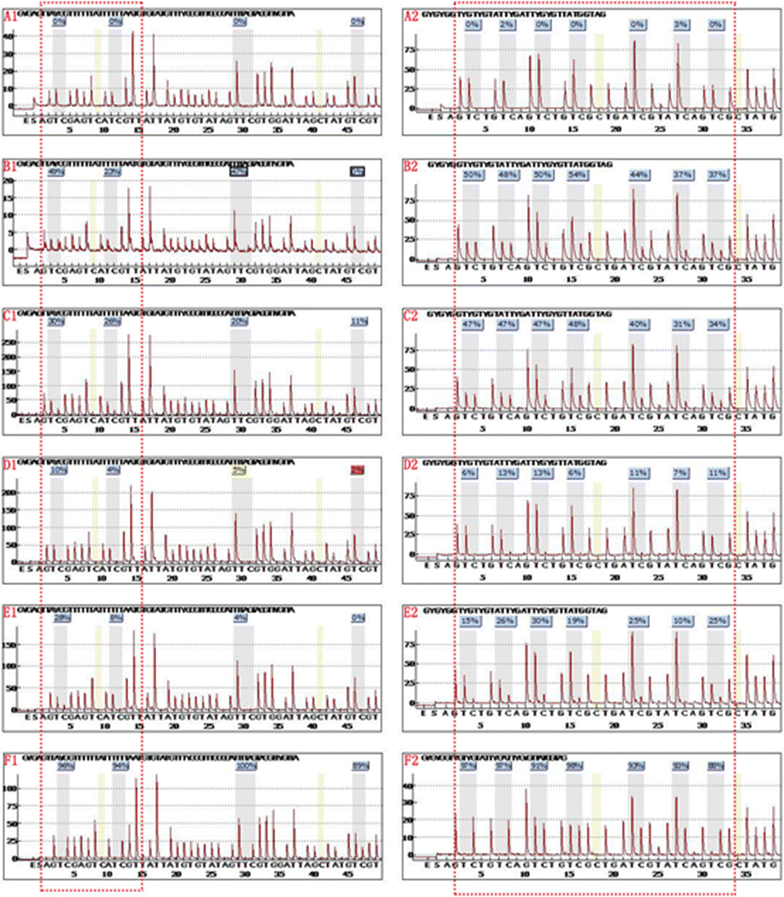Collapsin response mediator protein 4 promotor methylation level as a potential predictor for diagnosing primary malignant lymphoma of the prostate
- PMID: 29308052
- PMCID: PMC5753574
- DOI: 10.1186/s12935-017-0484-9
Collapsin response mediator protein 4 promotor methylation level as a potential predictor for diagnosing primary malignant lymphoma of the prostate
Abstract
Background: Primary malignant lymphoma of the prostate (PMLP) is prone to occur in the elderly, and it has no significant correlation with lactate dehydrogenase (LDH) and prostate specific antigen (PSA). Clinical symptoms and imaging data of PMLP remain unspecific, and its prognosis is poor. A previous result showed that collapsin response mediator protein 4 (CRMP4) promotor methylation can be used as a predictor for lymph node metastases in prostate biopsies. However, the relationship between CRMP4 promotor methylation and PMLP has not been studied.
Methods: We investigated the clinicopathological features of PMLP and the significance of CRMP4 methylation in PMLP. The clinical data and diagnosis information of 10 patients with PMLP were retrospectively analyzed. The CRMP4 promotor methylation level in paraffin-embedded tissues of the 10 patients with PMLP were determined and then compared to limited prostate cancer (LPCa) and its negative lymph node tissue [LPCa-LN (-) (10 cases)] and also to metastatic prostate adenocarcinoma (mPCa) and its positive lymph node tissue [mPCa-LN (+) (10 cases)]. Methylation of the CRMP4 promotor in each group was analyzed statistically. A receiver operating characteristic (ROC) curve was used to analyze the diagnostic value of CRMP4 methylation in PMLP.
Results: The average methylation value of CRMP4 in 10 PMLP patients, 20 cases of prostate adenocarcinoma tissue, 10 cases LPCa-LN (-) and 10 cases mPCa-LN (+) were 42.3, 30.6, 6.7 and 20.3%, respectively. A Kruskal-Wallis test showed that the difference of CRMP4 methylation was significant (X2 = 38.0, P < 0.001). An ROC curve analysis found that CRMP4 methylation > 40.9% could diagnose PMLP. This method had 90% sensitivity and 95% specificity under conditions of CRMP4 methylation > 40.9%. The area under the curve (AUC) was 0.957.
Conclusions: Methylation of the CRMP4 gene was significantly increased in PMLP, and it is expected to become a new predictor for PMLP.
Keywords: Collapsin response mediator protein 4 (CRMP4); Methylation; Predictor; Primary malignant lymphoma prostate (PMLP); ROC curve.
Figures







Similar articles
-
CRMP4 CpG Hypermethylation Predicts Upgrading to Gleason Score ≥ 8 in Prostate Cancer.Front Oncol. 2022 Mar 10;12:840950. doi: 10.3389/fonc.2022.840950. eCollection 2022. Front Oncol. 2022. PMID: 35359369 Free PMC article.
-
Prospective Study of CRMP4 Promoter Methylation in Prostate Biopsies as a Predictor For Lymph Node Metastases.J Natl Cancer Inst. 2017 Jan 25;109(6). doi: 10.1093/jnci/djw282. Print 2017 Jan. J Natl Cancer Inst. 2017. PMID: 28122909
-
Combined analysis of CRMP4 methylation levels and CAPRA-S score predicts metastasis and outcomes in prostate cancer patients.Asian J Androl. 2018 Jan-Feb;20(1):56-61. doi: 10.4103/aja.aja_3_17. Asian J Androl. 2018. PMID: 28382925 Free PMC article.
-
Collapsin response mediator protein 4 expression is associated with liver metastasis and poor survival in pancreatic cancer.Ann Surg Oncol. 2013 Dec;20 Suppl 3:S369-78. doi: 10.1245/s10434-012-2491-3. Epub 2012 Jul 18. Ann Surg Oncol. 2013. PMID: 22805864
-
Crmp4-KO Mice as an Animal Model for Investigating Certain Phenotypes of Autism Spectrum Disorders.Int J Mol Sci. 2019 May 20;20(10):2485. doi: 10.3390/ijms20102485. Int J Mol Sci. 2019. PMID: 31137494 Free PMC article. Review.
Cited by
-
CRMP4 CpG Hypermethylation Predicts Upgrading to Gleason Score ≥ 8 in Prostate Cancer.Front Oncol. 2022 Mar 10;12:840950. doi: 10.3389/fonc.2022.840950. eCollection 2022. Front Oncol. 2022. PMID: 35359369 Free PMC article.
References
LinkOut - more resources
Full Text Sources
Other Literature Sources
Research Materials
Miscellaneous

